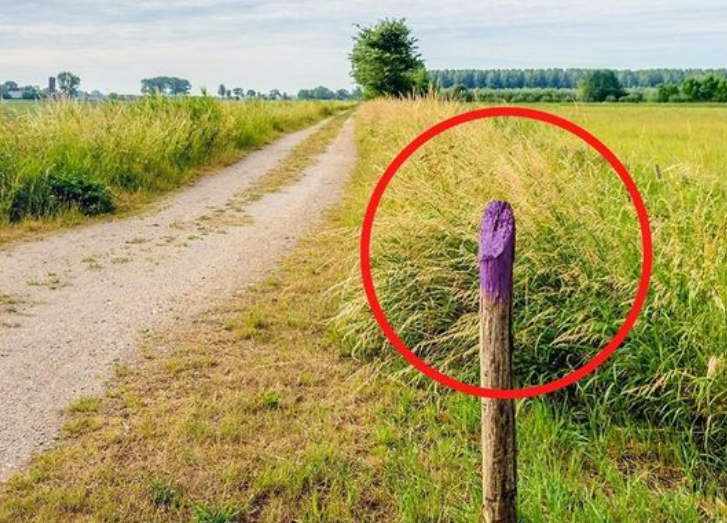Understanding purple paint laws can serve as a vital guidepost for navigating unfamiliar terrain, whether you’re behind the wheel or trekking through the wilderness.
As the summer season beckons, drawing many outdoors for adventures and exploration, it’s prudent to arm oneself with knowledge of local regulations. After all, a little precaution can go a long way in ensuring safety.
Amidst the landscape of fences and foliage, keep a keen eye out for the telltale hue of purple, a subtle yet significant indicator of boundary lines and restrictions.

So, what does a splash of purple signify? In many states, a purple fence serves as a clear message: no trespassing allowed. While traditional “No Trespassing” signs may fade or fall victim to wear and tear, a coat of enduring purple paint stands as a steadfast deterrent.
But purple markers aren’t confined to fences alone; trees adorned with this distinctive hue also serve as boundary demarcations, ensuring clarity even for those with color-blindness.
If you find yourself contemplating the application of purple paint to your property, it’s prudent to acquaint yourself with local ordinances, as not all states recognize purple as a legal marker. However, for those jurisdictions where it holds sway, adhering to specific guidelines is essential.
When applying purple paint to fences, ensure the stripes are vertical, at least an inch wide, and extend eight inches in length. Maintain consistency by spacing the marks three to five feet from the ground and no more than 100 feet apart. Opt for durable latex or spray paint for trees, ensuring visibility and accuracy in marking boundaries.
Whether navigating urban streets or meandering through remote trails, remember to prioritize safety and vigilance. With a mindful eye and an understanding of purple paint laws, you can tread confidently, knowing you’re on the right path.
